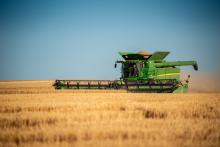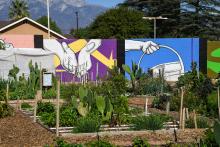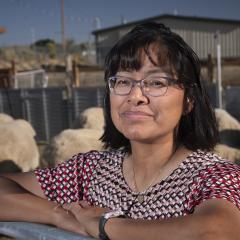
NRCS can help organic farmers work with nature instead of against it, building and conserving vital habitat for pollinators, beneficial insects, and wildlife.

Diversity is the rule of the game now. We’ve got diverse people, flowers, plants, animals, you name it. Biodiversity, in my case, would mean that we try to mimic Mother Nature.
Conservation plantings such as field borders, hedgerows, and riparian buffers can help protect water and soil resources and provide wildlife and pollinator habitat. These may also harbor natural enemies of pests and intercept pesticide and GMO pollen drift from neighboring non-organic farms.
NRCS can also provide assistance with biodiversity practices that include stream habitat restoration, tree and shrub establishment, wetland wildlife habitat management, prairie restoration, multispecies native perennials for biomass and wildlife habitat, riparian buffers, terrestrial and aquatic wildlife habitat, and prescribed grazing management.
NRCS not only helps to create wildlife habitat on a farm-by-farm basis, but the agency also targets at-risk species on a landscape scale. NRCS works with partners and landowners to conserve targeted species in specific areas, realizing that many farmers and ranchers working together can make a difference.

The NRCS offers programs to assist farmers with everything from nutrient management to pest management, putting in the insectaries to help them with the pollinators. A lot of farmers don’t know that. The core is always going to be the conservation plan. We go out on the land and meet with the producer, identify any resource concerns, then find a program that helps accomplish the practices we see need to be done.




